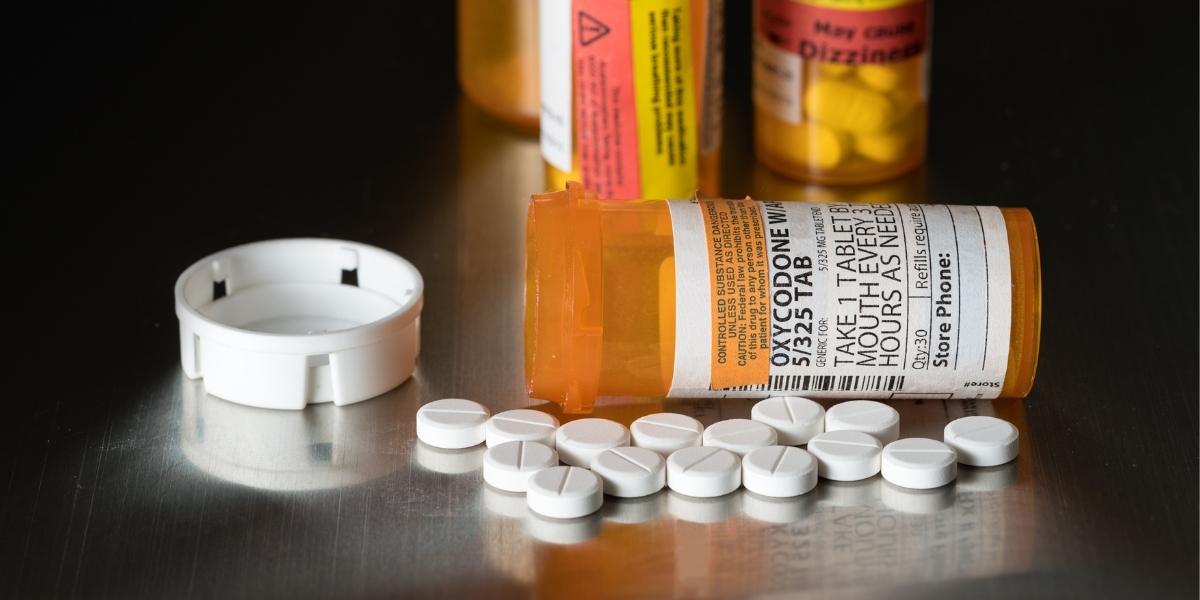Percocet MG Dosages, Uses, and Effects

Percocet is a combination of oxycodone and acetaminophen used to treat moderate to severe pain.
Because there is a high risk of addiction, abuse, and misuse, doctors only prescribe Percocet when they believe the potential benefits outweigh the risks.
Percocet is not meant for long-term use. Adults taking Percocet should follow the dosing schedule and amount provided by their doctor or pharmacist to prevent abuse and addiction.
What Is Percocet?
Percocet is a prescription pain killer made from oxycodone and acetaminophen. It belongs to a class of drugs called opioid analgesics, which act on opioid receptors in the brain to provide pain relief.
Percocet is an analgesic and opioid combination medication approved by the Food and Drug Administration (FDA) to treat short-term moderate to severe pain and chronic pain.
The goal of Percocet is to make pain tolerable; it will not make a person pain-free.
The oxycodone component of Percocet is the opioid half of the medication that works as a central nervous system depressant to help relieve pain by decreasing the pain signals to the brain.
The other ingredient of Percocet, acetaminophen, is an anti-inflammatory found in many over-the-counter pain relievers. It is used to relieve pain and reduce fever.
Acetaminophen is a non-opioid medication that works in the hypothalamus part of the brain. It also stops the body from producing the chemical prostaglandin, responsible for causing swelling throughout the body.
What Is Oxycodone?
Oxycodone is a semi-synthetic potent opioid with a high potential for abuse, although it is FDA-approved for managing chronic pain when other treatments are not enough.
It is the base for several different opioid analgesics or can be prescribed by itself under other brand names such as Tylox, Percodan, and OxyContin.
The Drug Enforcement Administration (DEA) reports that oxycodone has historically been a popular narcotic of abuse with street names including:
- Perc
- Kicker
- OC
- Ox
- Roxy
- Oxy
Is Oxycodone the Same as Percocet?
Despite being one of the ingredients in Percocet, oxycodone and Percocet are not the same.
The acetaminophen in Percocet makes it more effective in treating some types of pain than oxycodone or other opioid medications by themselves.
Mixing oxycodone and acetaminophen, whether in the form of Percocet or from mixing prescription and over-the-counter medications, has been linked to cases of acute liver damage.
Liver failure at times can lead to jaundice, which can lead to more severe complications, including brain damage.
How Often Can You Take Percocet?
The average recommended timing of adult doses is every four to six hours as needed for pain. Although, how often you take Percocet will depend on what your doctor prescribed, your level of pain, and other physical factors.
When taking Percocet or any pain medication, the lowest, most infrequent dose is the best idea to decrease the risk of addiction, abuse, and misuse.
Some people become immune to the effects of acetaminophen and opioids and could require a higher dose to feel the relief from the medication.
The total daily dose of acetaminophen should not exceed 4000 miligrams/4 grams.
Always talk to your doctor before changing your dosing schedule or amount.
If you are pregnant, plan to become pregnant, or breastfeeding, you should not take Percocet. Opioids can affect unborn babies’ development and are passed to babies through breast milk.

Doses of Percocet
Percocet 325mg is the lowest dose and typically what doctors will prescribe to start and adjust the amount as needed. However, doctors will tailor Percocet doses to each patient based on their physical factors, the level of pain, and how they respond to the medication.
Percocet is usually dispensed in a tablet form to be taken orally for adults. When looking at a prescription for Percocet, mg indicates the dosage amount.
Each dose of Percocet has a distinct color and shape, making it easy to distinguish. Below are the doses, how often to take them, and what the pill will look like, based on prescriptions for adults:
2.5 mg/325 mg
Percocet 2.5 mg/325 mg
Pink color, oval shape, one side engraved with “Percocet,” the other with “2.5”
Dosage: One to two tablets every 6 hours as needed for pain
Maximum Daily Dose: 12 tablets
5 mg/325 mg
Percocet 5 mg/325 mg
Blue color, circle shape, one side engraved with “Percocet,” the other with “5”
Dosage: One tablet every 6 hours as needed for pain
Maximum Daily Dose: 12 tablets
7.5 mg/325 mg
Percocet 7.5 mg/325 mg
Peach color, oval shape, one side engraved with “Percocet,” the other with “7.5/325”
Dosage: One tablet every 6 hours as needed for pain
Maximum Daily Dose: 8 tablets
10 mg/325 mg
Percocet 10 mg/325 mg
Yellow color, capsule shape, one side engraved with “Percocet,” the other with “10/325”
Dosage: One tablet every 6 hours as needed for pain
Maximum Daily Dose: 6 tablets
What if I Miss or Skip a Dose?
Because Percocet is an as-needed medication, missing a dose will not have harmful side effects; it may be a sign the pain is resolving if you don’t feel the need for it.
If you realize you missed the dose close to when you usually take it and are in pain, take your scheduled amount.
If you are close to your next scheduled dose, wait until then, and resume your regular dosing schedule.
Never double up doses or take two doses close together; doing so increases risks of side effects or reactions, including nausea, vomiting, diarrhea, breathing problems, and opioid overdose.
If you take Percocet regularly, you will likely develop physical dependence. You need to consult your doctor or pharmacist before you stop taking it.
Many medical professionals recommend tapering off Percocet to decrease the risk of side effects and withdrawal.
Where Do I Store It?
Percocet should be kept at room temperature in a dry area.
Keep Percocet out of reach from children to avoid poisoning. If it is possible to keep medications in a locked cabinet or safe, that is the best option.
Pre-sorting and storing your Percocet in a pillbox can help you remember to take your dosage on time or recall if you took it already to avoid taking a second dose.
How Do I Dispose of It?
If your Percocet has expired or you are no longer taking it, you must dispose of it properly.
According to the Food and Drug Administration (FDA), Percocet is on the “safe to flush” list of medicines that you can dispose of in the toilet.
If you are not comfortable flushing medication, you should mix it with something that will make it undesirable or impossible to consume, like coffee grounds, rotten leftovers, cat litter, or liquid waste.
You can find year-round disposal sites for prescriptions, drugs, and supplements through the DEA and the Department of Justice (DOJ).
Side Effects
Side effects of Percocet can range from mild to severe to life-threatening.
High doses or prolonged use increase the chance of side effects. Additionally, Percocet contains both acetaminophen and oxycodone, so both can cause more serious side effects.
Before taking Percocet, you should talk to your doctor or pharmacist about what to expect and what side effects may need extra medical attention.
Side effects of Percocet include:
- Constipation
- Nausea and vomiting
- Dizziness
- Dry mouth
- Sweating
- Headache
- Tiredness
- Rash
- Flushed skin
- Diarrhea
- Abdominal pain
- Shortness of breath
- Confusion
- Itching
- Euphoria
- Anxiety
- Coughing
Percocet can decrease respiratory drive, so call your doctor right away if you have a history of asthma and experience breathing problems. If any symptoms don’t go away or become extremely uncomfortable, seek medical attention as soon as possible.

Adverse Effects
Percocet is known to have adverse effects, especially when taken longer than recommended or mixed with other substances.
Some of Percocet’s common adverse reactions include:
- Physical dependence
- Opioid addiction
- Chronic obstructive pulmonary disease
- Liver disease
- Muscle weakness
- Increased blood pressure
- Changes in taste
- Heartburn
- Hearing loss
- Tinnitus or ringing or buzzing in one or both ears
- Fatigue
- Chest pain
- Asthma
- Decreased sexual drive
- Trouble swallowing
- Constipation
- Insomnia
- Depression
- Anxiety
- Suicidal thoughts
- Seizures
If these or any other symptoms do not resolve on their own or become intolerable or life-threatening, seek medical attention as soon as possible.
Withdrawal Symptoms
Your body can quickly become physically dependent on Percocet; while this doesn’t necessarily mean you developed an addiction, you will still experience withdrawal symptoms if you stop taking Percocet.
Common Percocet withdrawal symptoms include:
- Irritability
- Restlessness
- Depression
- Anxiety
- Sweating
- Decreased respiratory drive
- Changes in heart rate
- Muscle spasms
- Loss of appetite
- Nausea and vomiting
- Fluctuating body temperature
- Chills
- Headache
- Fatigue
- Chest pain
- Lightheadedness
- Dizziness
- Change in menstruation
- Panic attacks
- Excess saliva
Always consult your doctor or pharmacist before you stop taking Percocet. Your doctor can help you plan to taper your dose to avoid severe withdrawal symptoms safely.
Medically supervised detox might be the safest way to quit taking Percocet with long-time drug abusers.
Overdose
Percocet is an opioid-based medication, which means overdoses are common and often fatal. According to the Centers for Disease Control and Prevention (CDC), even relatively low doses of opioids are associated with overdose and death.
Mixing Percocet with other central nervous system depressants like alcohol, muscle relaxants, or other opioids increases the risk of drug interactions that result in accidental overdose and death.
Signs and symptoms of a Percocet overdose include:
- Extreme drowsiness
- Pinpoint pupils
- Inability to wake up
- Cold or clammy skin
- Blue or purple lips, fingertips, or toes
- No ability to maintain blood pressure
- Slow heartbeat
- Slow or shallow breathing
- Limp arms and legs
- No response to loud or painful stimuli
- Foaming at the mouth or drooling
- Vomiting
- Seizures
If an overdose is occurring, immediately call 911, and place the person on their side, the recovery position, to keep their airway clear and prevent them from choking on vomit.
If you have access to Narcan, use it and tell emergency medical workers how many doses you have given the person when they arrive.

Percocet Addiction Treatment
Treating Percocet addiction, like any other opioid addiction, requires a comprehensive and compassionate approach to ensure long-term success.
We offer on-site medical detox at Northridge Addiction Treatment Center in our comfortable, safe, and private residential treatment facility. We surround you with 24-hour care and support, knowing it can be the most challenging part of your recovery journey.
After completing detox, we foster that confidence, address your addiction’s roots, and treat all underlying causes— not just the symptoms. Our passionate and professional team knows the hardship of addiction, eliminating all judgment and empowering your freedom from this disease.
Nestled in the San Fernando Valley of Los Angeles, NATC is an intimate 6-person treatment center surrounded by beautiful mountains that allows you to begin to heal and start your path to recovery.
We are confident our evidence-based therapies will give you the strong foundation and coping skills you need to live a successful life in lasting recovery.
Our treatment specialists are eager to help you find the right treatment for you. It only takes a phone call. Reach out now.
Find Meaningful Recovery
Our caring and compassionate specialists are eager to help you comfortably navigate this journey to recovery. Our individualized treatment plan, programs, and therapies may be a perfect match for you or your loved one. Let us assist you in living the happy life you deserve. It starts with a phone call.




